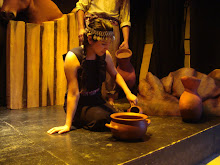 The main challenges in Veterinary Medicine, are in the health area: open heart surgery for example.
The main challenges in Veterinary Medicine, are in the health area: open heart surgery for example.
In Chile there is not animal's open heart surgery, only for humans. I think that it would be an excellent area to work with. The heart in animals is only studied in situ, with an animal death, just auscultating outside, i mean listen the chest or in the books. This is a challenge for the investigation, the science, and the veterinary medicine of course.
Another challenges, in Veterinary Medicine, in topics like education, are the vocational professional o vocational training. Some "teachers" in the practice of small animals (i write "teachers" because the majority of them are graduated Vets, and they are in charge just of medical consulting, and not pedagogy), are quite bighead, some of them they haven't patience to teach us, they forgot of they also was students like all of us and all we want to do is learn. With this i don't say that every graduated Vet is bighead, i just complaining of some Vets behavior.
Also in education challenges, i think that the teachers in this faculty in particularly, have to do a pedagogy courses or master degrees in pedagogy, etc., because they can be an excellent experts in their areas, but if they can't teach us or through their knowledge, means that we can't learn in a good form their subjects.
There is so many challenges in our area, but depend of we, the new generations do it well and make it come true.


 Education in Chile is in crisis. This is evident in the quality of many institutions of higher education, little access to system most vulnerable, over-indebtedness the families of students, generating profit - out of the law - by many private institutions are some of the demands required of the government of Mr. Piñera, are resolved.
Education in Chile is in crisis. This is evident in the quality of many institutions of higher education, little access to system most vulnerable, over-indebtedness the families of students, generating profit - out of the law - by many private institutions are some of the demands required of the government of Mr. Piñera, are resolved.
The main problem is the nonexistence of the right to education and the false assurance that higher education serves as a real tool of social mobility, and in this sense, it is not faithfully contributing to national development in the areas cultural, social, political and economic.
Solutions: -Equitable access, quality, integration and heterogeneity social in enrollment, this means rejecting the PSU, as this only detected socioeconomic status.
-Restructuring the system of scholarships and student aid for end the system based on debt of the student's families. Ensure that scholarships for students who fail to be in the second quintile, ie remaining in the third quintile, can cover all its university fees and the following quintiles can be a differential pay according to their ability to pay. Besides, the maintenance and feeding scholarship should be adjusted according to reality national.
-Demand the right to participation of all triestamental Higher education institutions in the election of officers and in making decisions.
This is not just a problem for students, but the entire society, because there is nofuture without quality public education.
For this we need to inform, mobilize. Become aware of what it means QUALITY PUBLIC EDUCATION.


“Both male and female cats display rolling behaviour, researchers report, usually in the context of mating”
 Domestics cat ROLL, this behavior caught the attention of scientists because is a often perform, so in 1994 Hilary N Feldman conducted a formal study on this behavior called “Domestics cats and Passive submission”. In this study Feldman center in roll and spent six month observing cats in kept in a large outdoor enclosure.
Domestics cat ROLL, this behavior caught the attention of scientists because is a often perform, so in 1994 Hilary N Feldman conducted a formal study on this behavior called “Domestics cats and Passive submission”. In this study Feldman center in roll and spent six month observing cats in kept in a large outdoor enclosure.Feldman defined the concept of “Rolling” like "involved an individual cat rolling onto its back, with forepaws held cocked, often with the legs splayed and abdomen exposed in response front of another cat in the majority of cases (79%).
But this study focused only in adult cats and specific that kitten behavior wasn’t examined.
Over the course of the half year Feldman was concluded that this conduct “had a obvious recipient”, because females rolled mostly while they were in heat, rolled also exclusively for adult males. For the other hand, males rolled “throughout the year” and this activity was directed toward other males.
Young males rolled toward adults, but the reverse almost never happened, so this suggesting to Feldman that “rolling may act as passive submission and inhibits the development of overt aggression".
In summary: "Rolling behaviour in domestic cats appears to have two functions. Females roll primarily in the presence of adult males, demonstrating a readiness to mate". But "males roll near adult males as a form of subordinate behaviour" and may have relevance for a similar behavior between pets and their owners.


















